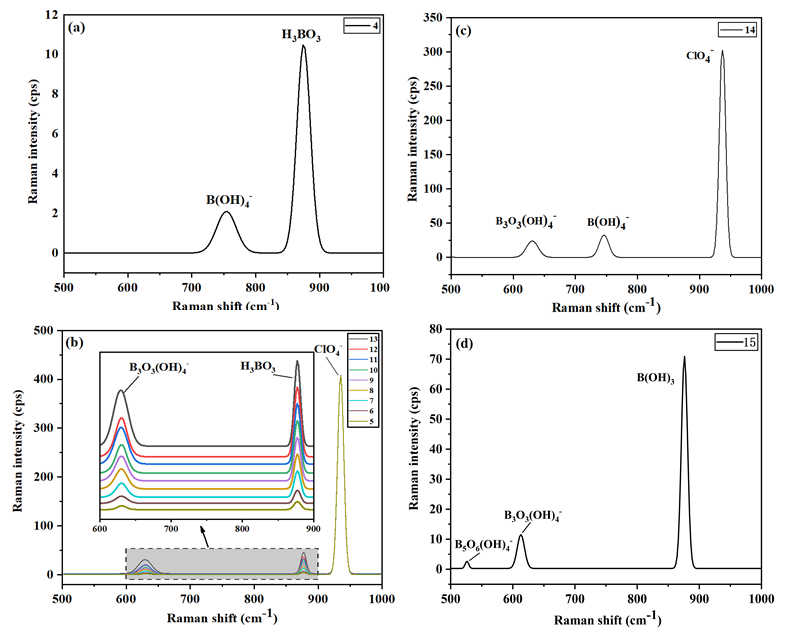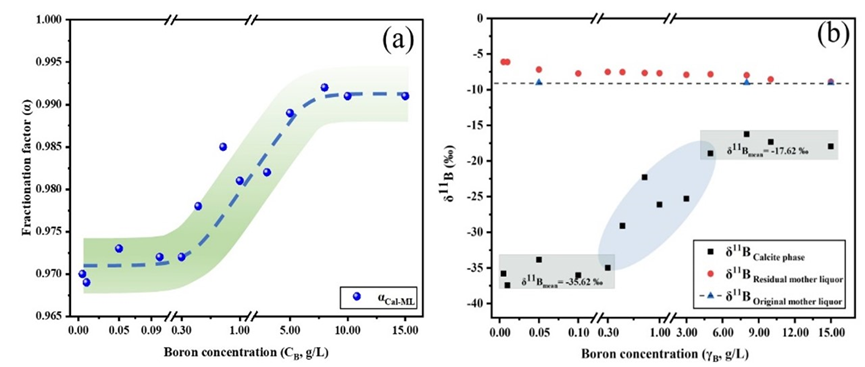Boron (B) isotopes are widely used in studies of water–rock interaction and earth surface processes. The δ11B is a potentially attractive proxy of seawater pH, as the relative abundance of the two primary aqueous B species in seawater (boric acid, H3BO3 and borate, B(OH4)-) is strongly pH-dependent. In the process of marine carbonate deposition, the fractionation of the B isotope is controlled by the proportion of H3BO3 and B(OH4)- in seawater. In addition to H3BO3 and B(OH4)-, there are polyborates (e.g., B3O3(OH)4-, B4O5(OH)42-, and B5O6(OH)4-) in salt-lake brine, and their impacts on B isotope fractionation are still unclear. Notable, significant differences are observed in the degrees of fractionation of B isotope during the deposition of carbonates in marine and salt-lake; nonetheless, studies on the internal reasons for this significant difference between the marine and salt-lake environments are scarce, limiting the application of B isotope in salt lakes.
In this study, a series of calcite sedimentary experiments in mother liquor with different B-O compounds was conducted at a constant pH of 8.20 (±0.05). The results showed the incorporation of H3BO3 through polyborates into calcite during the precipitation of calcite, thus reducing the B isotope fractionation degree between the mother liquor and calcite. This study provides an experimental basis for explaining the differences in B isotope fractionation between marine and terrestrial environments and the inversion of paleo-salinity using the B isotope of sedimentary carbonate.
These findings were recently published in the Journal of Chemical Geology under the title of Influence of polyborate ions on the fractionation of B isotopes during calcite deposition. Mr. Gu Huanen from Qinghai Institute of Salt Lake is the first author, Professor Ma Yunqi from Qinghai Institute of Salt Lake is the corresponding author. This work was supported by National Natural Science Foundation of China (Grant No. 41473117) and Instrument and Equipment Function Development Technology Innovation Project of Chinese Academy of Sciences (Grant No. 2018gz012).
Link address for full text: https://doi.org/10.1016/j.chemgeo.2023.121387

Figure 1. Raman spectra of B-O compounds in aqueous solutions with different boron concentrations.

Figure 2. Boron isotope characteristics of products obtained from calcite deposition experiment of mother liquor with different boron concentrations (or forms)
